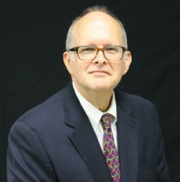September 2018 – This Month in Sacramento
THIS MONTH IN SACRAMENTO – SEPTEMBER 2018 NEWSLETTER
Legislative Update
by Richard Markuson
Region 9 Legislative Advocate

The Legislature completed its final month of its legislative session in August. At the time of editing this edition, more than one thousand bills and numerous high-profile issues remain on the agenda.
Governor Jerry Brown will have the month of September to sign or veto the measures sent to his desk. If history is any guide, another eight hundred or so bills will reach him and he will veto around 12% of them.
The campaign to repeal SB 1 is heating up. Newly elected Senator Ling-Ling Chang is seeking to have removed the signs on highway projects that attribute the construction to SB 1. ASCE members are reminded of Region 9’s opposition to the repeal (Proposition 6).
State Legislation
ASCE supported AB 1792 (Frazier D – Discovery Bay) that authorizes an affordable housing authority (AHA) to finance infrastructure for water, sewer, or other public infrastructure necessary to support the development of affordable housing is (in August) awaiting final passage.
ASCE supported AB 2062 (Maienschein R – San Diego) that will require planting projects undertaken or approved by Caltrans to include California native wildflowers and native and climate-appropriate vegetation is back in the Assembly waiting for a concurrence vote.
ASCE supported SB 436 (Allen D – Redondo Beach) that would have established the California STEM Professional Teaching Pathway for the purpose of recruiting, training, supporting, and retaining qualified science, technology, engineering, and mathematics (STEM) professionals, including military veterans, as mathematics and science teachers in California, died in the Assembly.
SB 920 (Cannella R – Ceres) was signed by Governor Brown. It extends until January 1, 2026, the authorization for persons licensed to engage in the practice of engineering, land surveying, or architecture to form limited liability partnerships.
New Reports of Interest
Joule released “A Process for Capturing CO2 from the Atmosphere.” Direct air capture of carbon dioxide (CO2) to reduce atmospheric levels is not a new technology, but it has been considered too expensive to be economically viable. However, new research appears to have discovered ways to reduce the cost of CO2 capture per ton. The final method has been tested in a pilot plant since 2015, and assessed by an independent third party. The final cost of capturing CO2 from the atmosphere is estimated to be anywhere between $94 and $232 per ton of CO2, potentially representing a six-fold cost reduction from previous estimates. Each plant can capture roughly 1 megaton of CO2 per year, representing .25% of California’s annual carbon emissions.
Scientific Investigations Report released The HayWired Earthquake Scenario—Engineering Implications. What would happen to the San Francisco Bay region during and after a magnitude-7 earthquake? This report describes a hypothetical yet scientifically realistic earthquake sequence called the HayWired scenario. Analysis suggests that 800 deaths and 16,000 nonfatal injuries would result from shaking alone, while property and business disruption could incur losses of more than $82 billion. “The Bay Area has invested tens of billions of dollars in earthquake protections since the magnitude 6.9 Loma Prieta earthquake rattled the San Andreas Fault in 1989…. But an earthquake on the ‘heavily urbanized’ Hayward Fault would be more severe than Loma Prieta.” (San Francisco Chronicle, Apr. 18, 2018).
Southern California Water Coalition Task Force released Stormwater Capture: Enhancing Recharge & Direct Use through Data Collection. “The purpose of this 2018 whitepaper update is to gain a better understanding of actual stormwater runoff capture volumes, costs, benefits, and project performance across the region to inform future discussions.” The Task Force analyzed complete data from 32 projects of six Southern California agencies over ten years. The results showed that 13,400 AFY (acre feet/year) of stormwater was captured between 2006 and 2016. Total capital cost for all 32 projects totaled $132 million, and cost per acre foot of captured stormwater ranged from a low of $59 per acre foot to a high of $250,000 per acre foot. Retrofit projects tend to be more cost effective than new projects. Monitoring is essential, yet is not often budgeted.
Governor’s Appointments
Reappointed to the California Board for Professional Engineers, Land Surveyors, and Geologists: Fel Anthony Amistad, San Mateo, mortgage loan officer at Presto Loans; Kathy Jones Irish, Los Angeles, joint venture partner at Englander Knabe and Allen since 2018; Elizabeth Mathieson, Alameda, part-time senior managing scientist at Exponent Failure Analysis Associates; Mohammad Qureshi, Tustin, public works director for the County of Glenn Public Works Agency.
